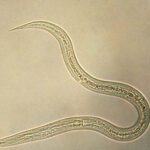Root-knot nematodes, commonly known as Meloidogyne nematodes, are one of the most destructive underground pests in agriculture. They affect a wide range of crops, including vegetables, fruits, and ornamental plants, causing considerable damage. This article explores the biology of these nematodes, their impact on crops, and effective strategies for their management.
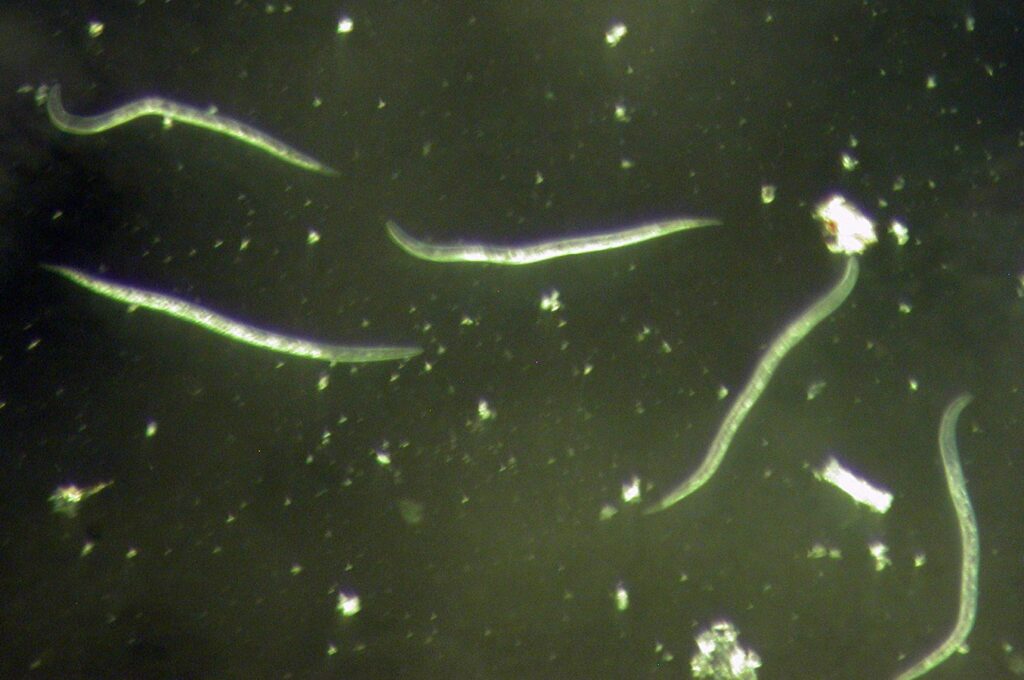
What Are Meloidogyne spp. Nematodes?
Meloidogyne spp. are microscopic nematodes that live in the soil and attack plant roots. They feed on root cells, causing the formation of knots or galls, affecting the plant’s ability to absorb water and nutrients.
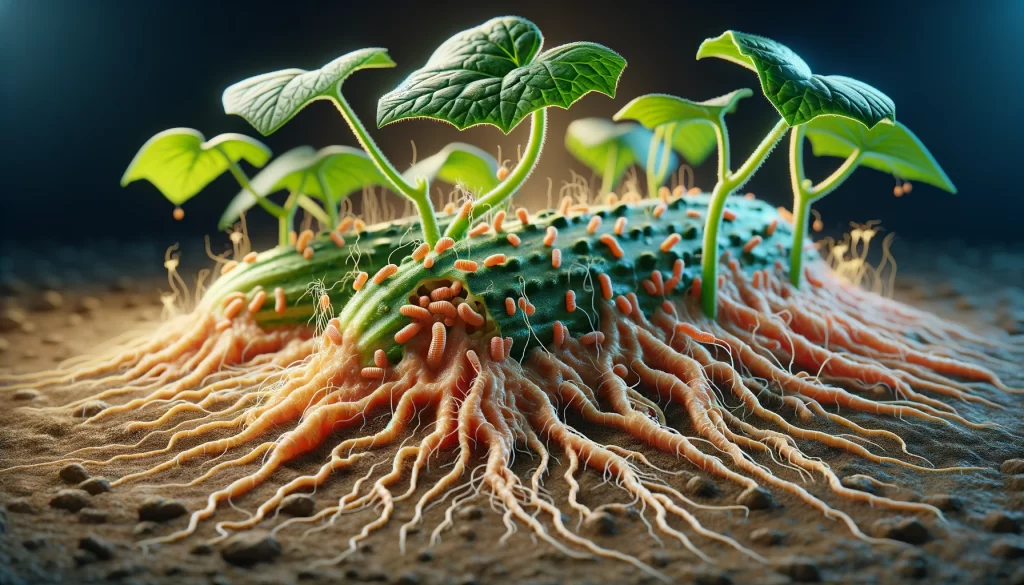
Affected Crops:
Meloidogyne nematodes, commonly known as root-knot nematodes or gall nematodes, can affect a wide variety of crops. Some of the crops most affected by Meloidogyne nematodes include:
- Tomato (Solanum lycopersicum): Meloidogyne nematodes can cause galls on tomato roots, affecting growth and fruit production.
- Pepper (Capsicum spp.): Pepper plants are susceptible to root-knot nematodes, resulting in poor growth, decreased yield, and fruit quality.
- Potato (Solanum tuberosum): Meloidogyne nematodes can damage potato roots, resulting in reduced root system development and decreased tuber yield.
- Cucurbits: Crops such as cucumber (Cucumis sativus), squash (Cucurbita spp.), and melon (Cucumis melo) are susceptible to Meloidogyne nematodes, which can cause galls on roots and affect plant growth.
- Bean (Phaseolus vulgaris): Meloidogyne nematodes can damage bean roots, resulting in reduced growth and decreased pod and grain production.
- Cotton (Gossypium spp.): Gall nematodes can cause significant damage to cotton roots, resulting in reduced growth and fiber production.
- Banana and Plantain (Musa spp.): Meloidogyne nematodes can damage the roots of banana and plantain plants, resulting in reduced plant growth and fruit production.
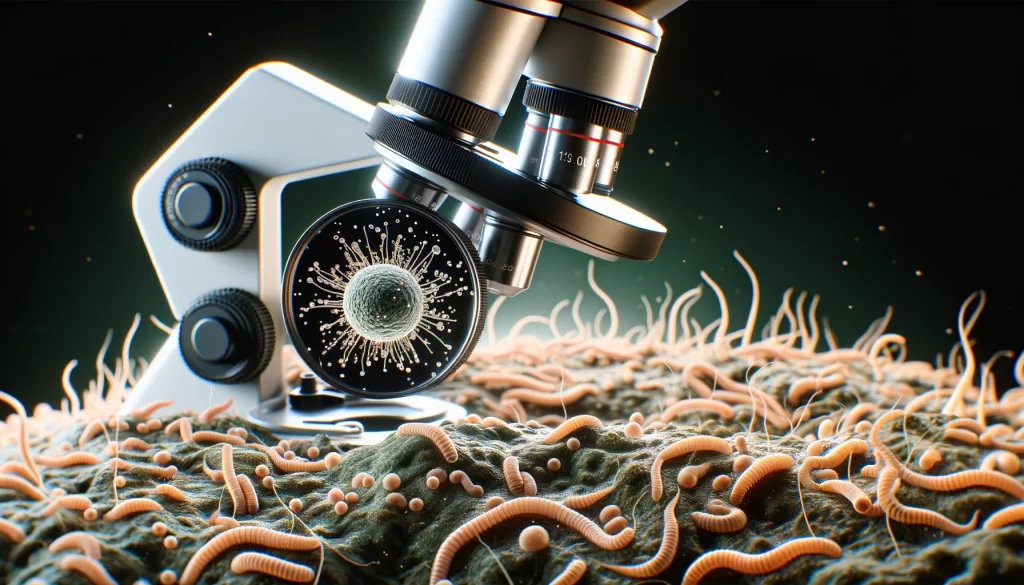
Damages and Symptoms:
Some common symptoms that may indicate nematode infection include:
- Wilting or yellowing of leaves: Plants infected by nematodes may show symptoms of water stress, such as wilting or yellowing of leaves, due to decreased water and nutrient absorption by damaged roots.
- Stunted growth: Plants affected by nematodes may exhibit poor growth compared to healthy plants. This can manifest as slow growth, reduced leaf size, or overall weaker development.
- Abnormal roots: Nematodes can cause deformations in plant roots, such as galls, knots, or lesions, which are characteristic of nematode infection. These root abnormalities can affect water and nutrient absorption, contributing to wilting and stunted growth symptoms.
- Reduction in yield: The presence of nematodes in crops can result in a decrease in yield and quality of harvested products. This can manifest as lower fruit, tuber, or grain production, as well as a decrease in their size or quality.
- Crop-specific symptoms: Some crops may show specific symptoms of nematode infection. For example, in the case of tomatoes, symptoms may include root galls and reduced plant growth, while for cucurbits, symptoms may include root necrosis and reduced plant development.
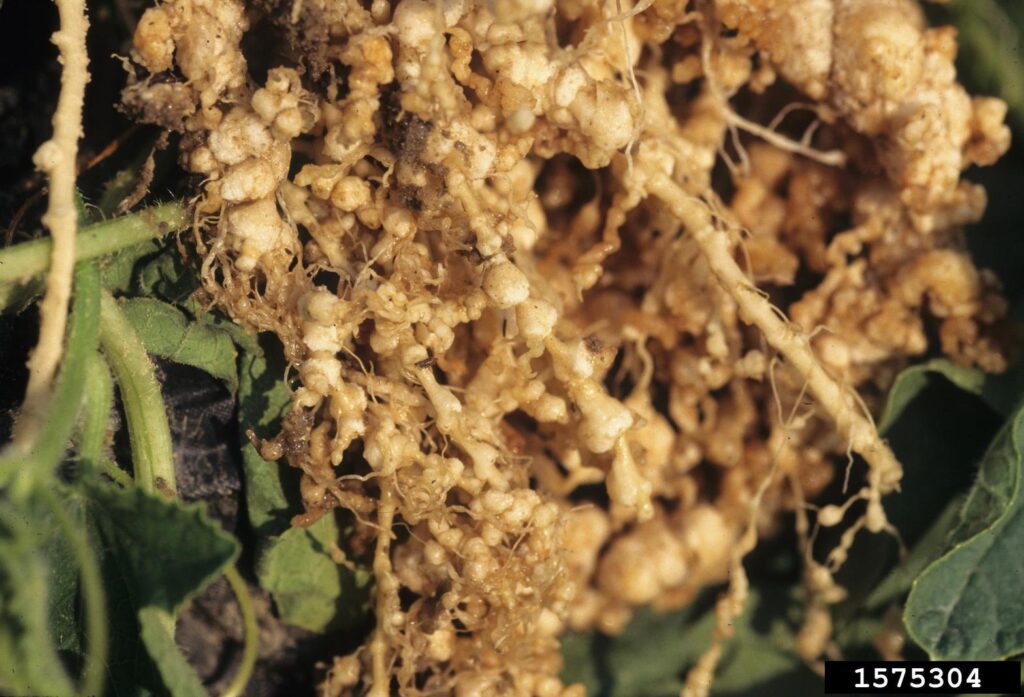
Control Strategies:
- Use of resistant crops: Using plant varieties that are resistant or tolerant to nematodes can help reduce damage caused by these pests. Many breeding programs have developed cultivars that are less susceptible to certain nematode species.
- Soil solarization: Soil solarization involves covering the soil with transparent plastic during warm months to raise soil temperature and kill nematodes and other pathogens present in the soil.
- Organic amendments: Using organic amendments, such as compost, manure, or other organic materials, can improve soil health and promote the activity of nematode-antagonistic organisms, such as beneficial fungi and bacteria.
- Entomopathogenic nematodes: Some nematodes and entomopathogenic fungi are used as biological control agents of plant-parasitic nematodes. These pathogenic organisms can infect and kill nematodes in the soil.
- Chemical nematicides: In cases of severe infestations, chemical nematicides can be used to control nematodes. However, it is important to use these products with caution and follow manufacturer’s instructions to minimize environmental impacts and risks to human health.

Organic Nematicides
Here are some natural nematicides used in nematode control in agriculture:
- Neem extract (Azadirachta indica): Neem oil and other extracts from neem plant parts contain natural compounds with nematicidal properties. Neem is known for its repellent action, inhibiting nematode feeding and reproduction.
- Safflower oil: Oil extracted from safflower seeds (Carthamus tinctorius) has been shown to have nematicidal properties, especially against plant-parasitic nematodes in the soil.
- Garlic extract: Garlic (Allium sativum) contains sulfur compounds that can act as nematicides. Garlic extracts have been used in soil applications to control nematodes.
- Chili extract: Chili (Capsicum spp.) extracts contain spicy compounds that may have repellent or toxic effects on nematodes.
- Essential oils: Some essential oils, such as peppermint, eucalyptus, cinnamon, or thyme oil, have been shown to have nematicidal activity in scientific studies.
- Tropical plant extracts: Tropical plants such as tamarind (Tamarindus indica), pineapple (Ananas comosus), and four o’clock flower (Mirabilis jalapa) have been investigated for their nematicidal properties.
- Entomopathogenic fungi: Some entomopathogenic fungi, such as the genus Paecilomyces and the genus Trichoderma, may have nematicidal activity against plant-parasitic nematodes in the soil.

Nematicide Application
Here’s a general step-by-step for applying natural extracts for nematode control in crops:
- Pest identification: Before applying any treatment, it’s important to properly identify the nematode pest and determine the severity of infestation. This can be done by observing symptoms on plants and conducting soil analyses to detect nematode presence and level.
- Natural extract selection: Choose a natural extract that is suitable for the type of nematode and affected crop. Consult with an agriculture specialist or nursery for specific recommendations on which extract to use and how to apply it.
- Extract preparation: Prepare the extract according to the manufacturer’s instructions. This may involve diluting the extract in water or another suitable carrier at the recommended ratio.
- Soil preparation: Before application, ensure the soil is properly prepared. This may include tilling or plowing the soil to break up the top layer and improve extract penetration, as well as removing weeds and residues from previous crops.
- Soil application: Apply the extract to the soil around the roots of nematode-affected plants. This can be done by soil drenching with extract solutions, using a drip irrigation system, or spraying the extract onto the soil.
- Soil fumigation (optional): If the natural extract can be used as a fumigant, follow specific instructions for steam or gas application to the soil. This may require the use of specialized equipment and additional safety precautions.
- Foliar application (if necessary): If nematodes affecting the aerial part of plants need to be treated, dilute the extract in water and apply it by spraying onto the leaves of affected plants.
- Monitoring and follow-up: After application, regularly monitor nematode populations and plant health to assess treatment effectiveness. It may be necessary to repeat the application as needed to achieve effective nematode control.

Conclusion:
Meloidogyne spp. nematodes are a complex and challenging pest, but with an integrated approach combining cultural, biological, and chemical practices, their impact can be mitigated. The key to successful nematode management lies in prevention, regular monitoring, and the application of strategies tailored to the specific conditions of each crop and environment.
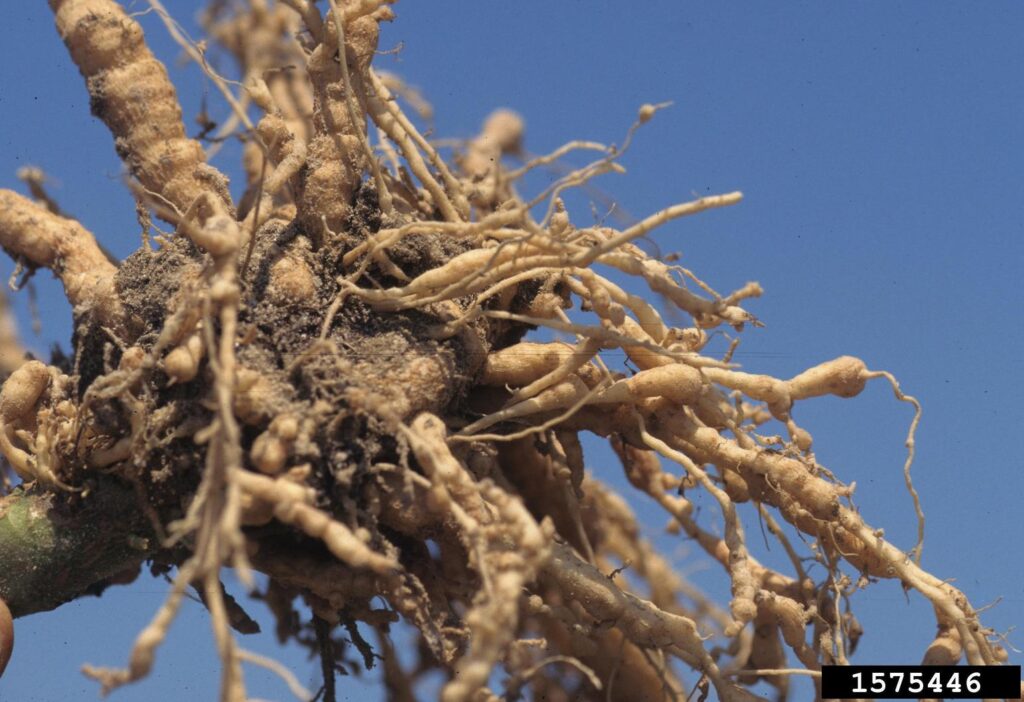
 AgronoBlog – Agriculture Blog
AgronoBlog – Agriculture Blog 